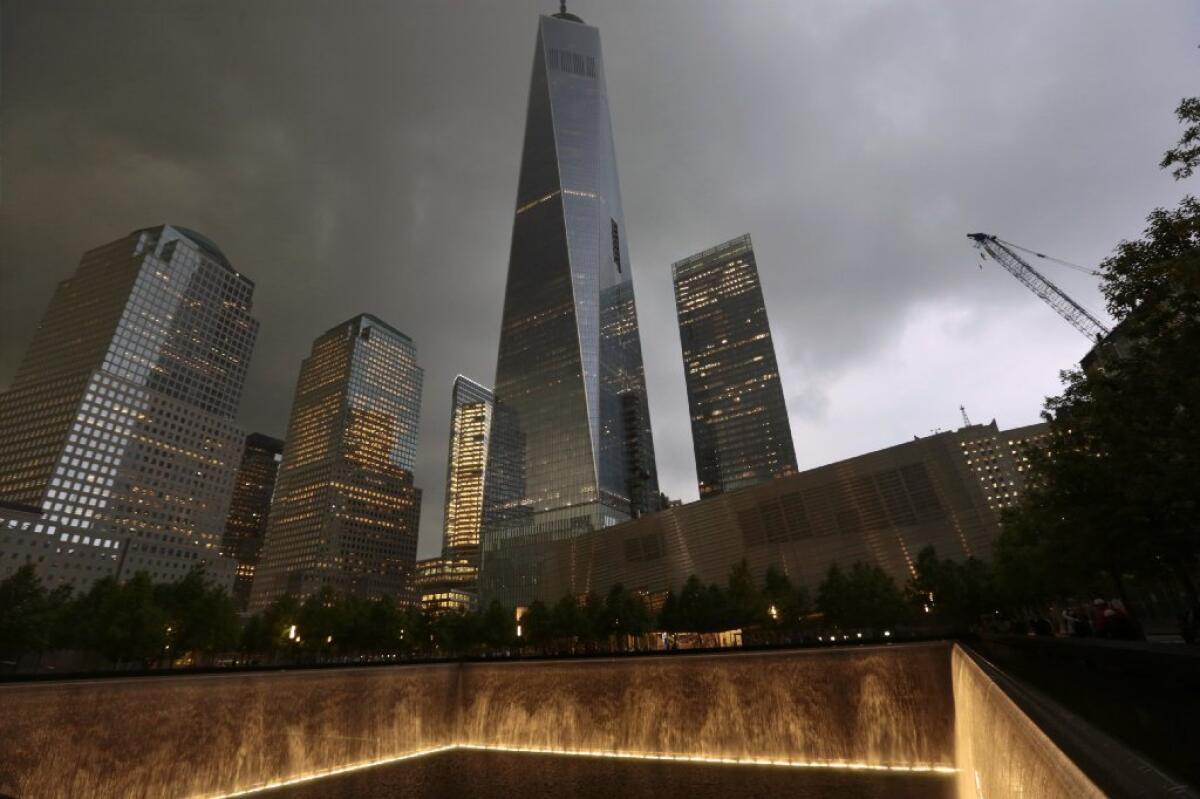Opinion: Writing on the 9/11 memorial -- graffiti or grief?

New York cops have a tricky situation on their hands: What to do, or not do, about the relatives and friends of 9/11 victims who have begun scratching messages into the bronze plaques bearing the names of victims at the new 9/11 memorial.
Technically itâs an act of criminal mischief, but police wisely arenât even trying to figure out who did it; who would want to arrest a relative who had cut âLove 4Everâ alongside a victimâs name?
But if the practice doesnât get addressed in some way, it could become its own âbroken windowâ opportunity, inviting all kinds of vandalism from strangers, conspiracy theorists and thugs with cruel things to say. That graffiti would suck the humanity out of the memorial and degrade its meaning, turning it into the bronze version of some websiteâs unmoderated message board.
The dead of 9/11 are members of our national family, and maintaining the memorialâs dignity will be as important as building it in the first place.
For now, employees are using a âblack patinaâ to cover the messages, or more intensive restoration, if necessary. But thereâs a better solution, and itâs at the Vietnam Veterans Memorial Wall in Washington.
For 30 years, its black stone walls, with the names of tens of thousands of dead, have been a destination for pilgrimages by family and friends, strangers and people who werenât even born until after the war ended. There, at the foot of the wall below a loved oneâs name, people have left more than half a million items -- medals, photos, flowers and dog tags.
The National Park Service archives and catalogs pretty much everything but the flowers, and for about 10 years, some of these were put on exhibition at the Smithsonianâs National Museum of American History, in a display titled âPersonal Legacy: The Healing of a Nation.â
The 9/11 Memorial Museum already displays multimedia images and bios of the nearly 3,000 victims, and remembrances from those who knew them. That may be the right place for families and friends to mark down more vividly their immediate, powerful grief and longing when they come to visit, and, as they do at the Vietnam Wall, to leave objects and notes that convey a richer sense of each life lost.
That would still convey both the harrowing humanity of the place, and the integrity and grandeur of the monument; to paraphrase Secretary of War Edwin Stanton at Lincolnâs deathbed, it too belongs to the ages.
More to Read
A cure for the common opinion
Get thought-provoking perspectives with our weekly newsletter.
You may occasionally receive promotional content from the Los Angeles Times.











